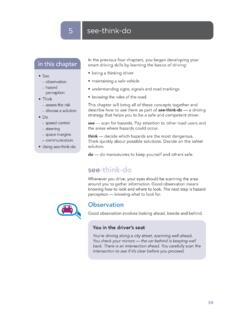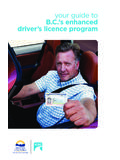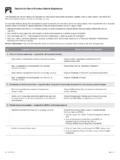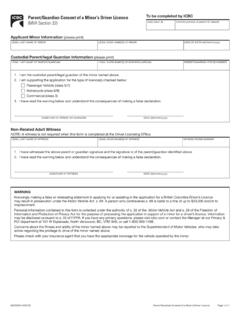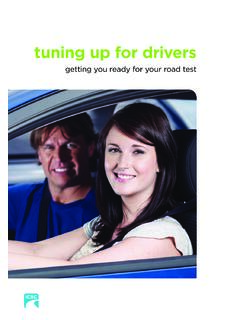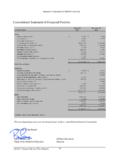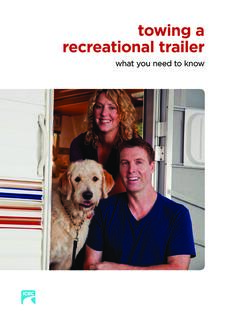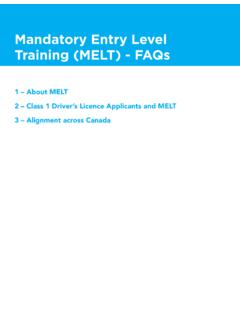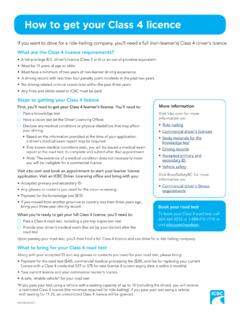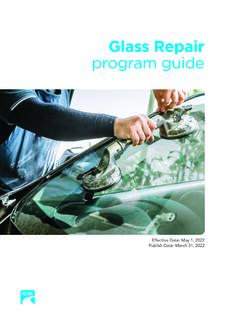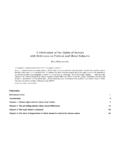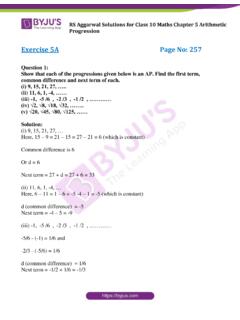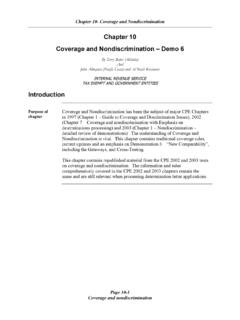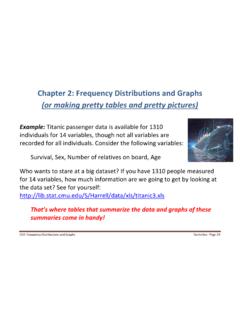Transcription of Learn to Drive Smart Manual - chapter 4 - ICBC
1 41rules of the road4 chapter 3, signs, signals and road markings, gave you some information about the most common signs, signals and road markings you will see when driving. This chapter gives you the information you ll need to help you Drive safely at intersections, use lanes correctly and park legally. Understanding intersectionsIntersections are places where a number of road users cross paths. There is often a lot of activity in intersections, so it s important to be alert. Remember that other road users may be in a hurry, and may want to move into the same space that you are planning on moving into.
2 SignallingSignals are important they let other traffic know what you are intending to do. Signal when you re preparing to: turn left or right change lanes park move toward, or away from, the side of the road. Types of intersectionsControlled intersections A controlled intersection is one that has signs or traffic lights telling you what to do. To Drive safely in these intersections, you need to know what the signals and signs mean, and also the right-of-way rules. But always be cautious. Other drivers may not be paying attention to the signs and signals. Uncontrolled intersections Uncontrolled intersections have no signs or traffic lights.
3 They are usually found in areas where there isn t much traffic. But they can be dangerous places because drivers might not be expecting cross traffic or pedestrians. As you approach, slow down and look out for other road users. Scan the intersection from left to right. If another vehicle has arrived at the intersection before you, slow down and yield. If two vehicles arrive at the same time, the vehicle on the left must yield to the vehicle on the right. Treat an unmarked T-intersection the same way as any other uncontrolled intersection. driving tip Understanding intersections signalling types of intersections stopping at intersections right-of-way at intersections Using lanes correctly which lane should you use lane tracking turning lanes reserved lanes pulling into a lane passing merging highway or freeway entrances and exits cul-de-sacs turning around Parking tips and rules in this chapter42developing your Smart driving skillsBe careful when you want to turn left where other traffic is approaching from the opposite direction.
4 Yield to traffic that is in or near the intersection. If you intend to go straight through and a vehicle is already in the intersection turning left, you must at intersections There are rules about where you position your vehicle when you have to stop at an there is a stop line, stop just before the line. If there is a crosswalk but no stop line, stop just before the there is an unmarked crosswalk, stop where you would if there were a marked there is no stop line, no crosswalk and no sidewalk, stop just before you enter the intersection. If a traffic control person is directing traffic, you must follow that person s directions.
5 Driving tipchapter 4 rules of the road43 Right-of-way at intersections Right-of-way rules determine who must yield when more than one road user wants to move into the same space. It s important to know these rules because they keep traffic moving in an orderly way. But remember that you can t always count on the other person to follow the rules. And even if you have the right-of-way, it s still your responsibility to do all you can to avoid a crash. For information on right-of-way rules for crosswalks and railway crossings, see chapter 6, sharing the road. Intersections controlled by traffic lights Most people know who has the right-of-way at intersections controlled by traffic lights, but they may not understand how to correctly respond to these lights.
6 Here are some pointers that will help you stay safe at intersections: steady red light a red light means that you must come to a complete stop. You must wait for the light to turn green before you go straight ahead. After you have stopped and made sure the intersection is clear of all vehicles, cyclists and pedestrians, you may turn right or turn left onto a one-way street. Watch for signs prohibiting you from making these turns on a red green light green means go only if the intersection is clear, and it is safe to do so. stale green light a stale green light is one that has been green for a long time, and is about to turn yellow.
7 If you didn t see the light turn green, then it may be stale. Look for additional clues: are there a lot of cars lined up on the cross street waiting for the light to change? in many areas, the crosswalk signal will change from a white figure to an orange hand just before the light turns yellow, or will show how many seconds are left before the traffic light will change. point of no return as you approach a stale green light taking into consideration your speed, the road conditions and the traffic behind you decide on a point where you will no longer be able to stop safely.
8 This is sometimes called the point of no return. When you reach this point, keep on going even if the light changes to yellow. You need to judge accurately so you won t be in the intersection when the light turns red. Sometimes traffic lights stop working properly. The lights can go out, or all four lights can start flashing. Treat the intersection like a four-way stop if this tipIf you didn t see the light turn green, then it may be stale. You should be prepared to stop. driving tipIt is illegal to back up into an intersection or over a tip44developing your Smart driving skills fresh green light a fresh green light is one that has just turned green.
9 Don t move forward until you ve scanned the intersection to make sure it s clear. making a left turn on a steady green light when you are making a left turn, you must yield to oncoming traffic and wait for a safe gap before you yellow light yellow means that the signal is about to turn red. You must stop before entering the intersection unless you can t safely stop in time. Sometimes drivers panic if they are in an intersection waiting to make a left turn and the light turns yellow. In this situation, remember that you are legally allowed to complete your turn. But watch carefully for other vehicles, especially oncoming drivers trying to beat the red green light watch for pedestrians, who may activate the pedestrian traffic light to change to yellow and then to red.
10 Even if the pedestrian traffic light is not activated, traffic on the side street is facing a stop sign, and may be waiting to move into the intersection when it is clear and safe to do signals Some intersections have turn signals with green arrows, or designated lanes controlled by their own set of traffic lights, to allow you to turn left. These are called protected turns. As long as the green arrow is shown, you are protected from through traffic they are facing a red light. separate left signal some intersections have designated left-turn lanes controlled by their own set of traffic lights.
